Summary
Neurotrauma & Neuroprotection Laboratory
My lab is interested in understanding the molecular pathophysiology of brain injuries such as traumatic brain injury (TBI) and stroke and in neuroprotection (preventing or limiting the spread of injury). Currently there are no effective neuroprotective drugs that target the injury development that occurs following TBI or stroke. We have been investigating the neuroprotective efficacy of anaesthetics and inert gases such as xenon and argon. The identification of the molecular targets of certain anaesthetics such as xenon has led to the idea of using them as treatments to prevent brain damage in conditions such as traumatic brain injury and hypoxic/ischemic injury such a neonatal asphyxia and post-cardiac arrest brain damage. In my lab we use a variety of approaches to study the molecular actions of anaesthetics and neuroprotectants; these include patch-clamp electrophysiology, site-directed mutagenesis and models of brain injury.
Enquiries from prospective PhD, BSc, MRes or Erasmus students are always welcome
Public Engagement
We participated in "Science Uncovered", an event for the general public at London's Natural History Museum in 2012 & 2013. Science Uncovered is the Natural History Museum’s biggest after hours event attended by 8,500 visitors and is part of an EU funded European Researcher's Day with events taking place simultaneuosly throughout Europe. Click here for a news report on the event. You can see photos of our stand.
In April 2013 we participated in the Wonder Festival of Art & Science of the Brain at London's Barbican Centre where we showcased our neuroprotection work. The event was attended by over 5,000 visitors. In May 2013, May 2014 & May 2016 the research group took part in the Imperial Festival in an event attended by 15,000 members of the public and alumni.
We participated in event for Imperial College Alumni & Donors, November 2014. We participated in Imperial Fringe event to launch the Imperial College Annual Report on Animal Research, February 2015. Our lab has done an outreach activity day at Gillespie Primary School on physiology & the brain.
Dr Dickinson worked with the innovative Lab 13 Science Lab at Gillespie Primary on a project on Manuka Honey funded by British Pharmacological Society. The pupils presented at Cheltenham Science Festival in 2015 and the project was featured in The Times, The Mail Online, Science in School and The British Society for Immunology website.
Current & Recent Group Members
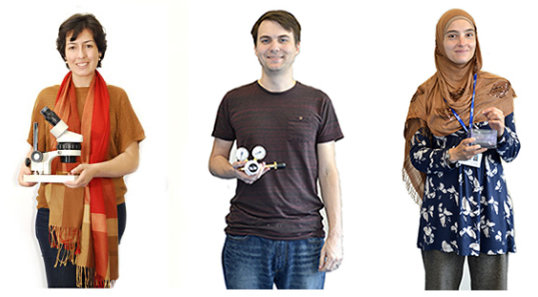 Dr Rita Campos Pires Dr Phillip Aitken Dr Jitka Aldhoun
Dr Rita Campos Pires Dr Phillip Aitken Dr Jitka Aldhoun
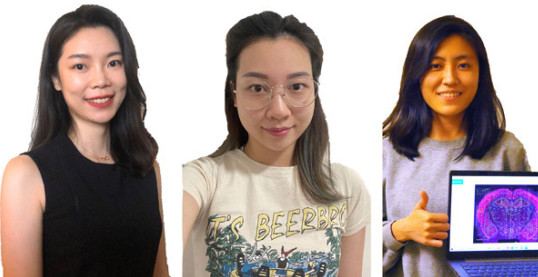 Dr Min Liang Emilie Lai Valerie Sun
Dr Min Liang Emilie Lai Valerie Sun
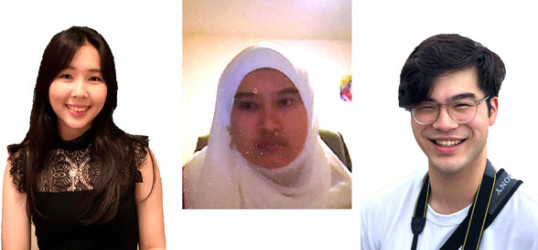 Isabelle Leong Fatin Ahmad Andy Ko
Isabelle Leong Fatin Ahmad Andy Ko
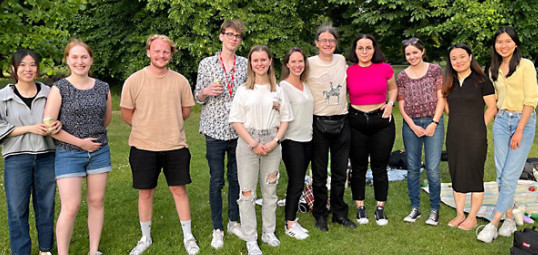 Dr Yonglin Mai, Eszter Ujvari, Matthew Lee, Daniel Pap, Sonya Skobelkina, Dr Mariana Barros, Noemi Ianucci, Lauren Gomes, Dr Yuan Wang, Jiayang Zhang
Dr Yonglin Mai, Eszter Ujvari, Matthew Lee, Daniel Pap, Sonya Skobelkina, Dr Mariana Barros, Noemi Ianucci, Lauren Gomes, Dr Yuan Wang, Jiayang Zhang
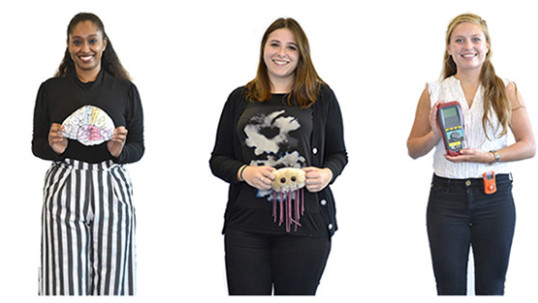 Nada Mohamed Ali Flavia Valeo Georgina Carson
Nada Mohamed Ali Flavia Valeo Georgina Carson Isobel Fuller Charlotte Boyles Shughoofa Karimi
Isobel Fuller Charlotte Boyles Shughoofa Karimi
 Eszter Ujvari Tania Velez-Perez Ivy Ong
Eszter Ujvari Tania Velez-Perez Ivy Ong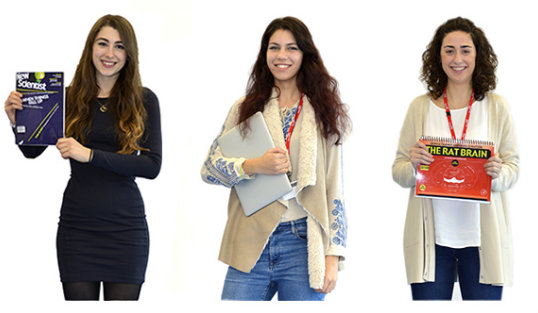 Kate Gallagher Maria Balaet Amaia Cadinanos Garai
Kate Gallagher Maria Balaet Amaia Cadinanos Garai
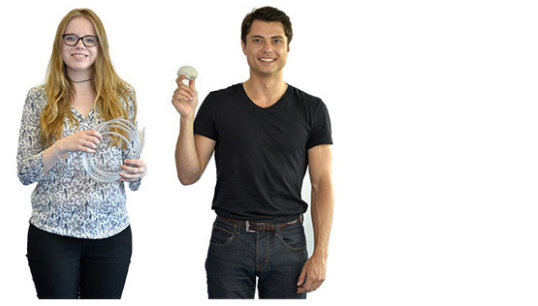 Joanna Saville Paul Soumalias
Joanna Saville Paul Soumalias
GROUP MEMBERS 2012-16
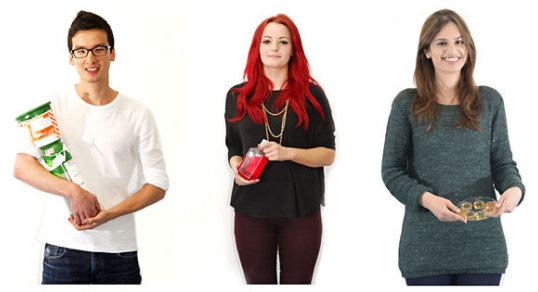 Scott Armstrong Katie Harris Diya Malhotra
Scott Armstrong Katie Harris Diya Malhotra
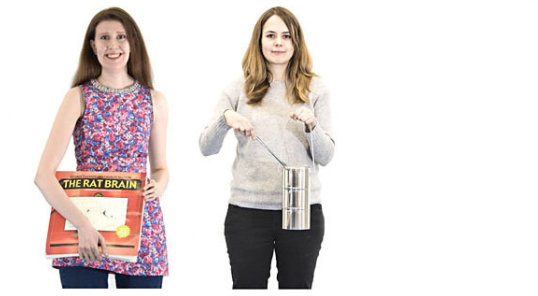 Mariia Koziakova Sarah Ceichanowicz
Mariia Koziakova Sarah Ceichanowicz
Amina Yonis Perrine Pluchon Ala Medjadam
Ashni Pau (BSc) Sophie Rae (BSc)
AWARDS
Group member Rita Campos Pires won the prize for best oral presentation at the Imperial College Academic Health Science Centre research event in 2015.
Scott Armstrong won the MRC Max Perutz Science Writing Award 2013 for his essay entitled "Saving the Brain from itself" which was published in the Times Higher Education.
Medical student Ashni Pau won the Evelyn de Rothschild Prize for Best BSc Project for her work on xenon neuroprotection. Ashni is seen here (second left) with other BSc Prize winners and Professor Alison McGregor (centre) Head of Year 4 Medicine.
Katie Harris won a special prize for Science Communication and second prize overall in the Graduate School Poster Competition.
Scott Armstrong won first prize in the student poster competition at The Royal British Legion Centre for Blast Injury Studies launch event in October 2013. Co-author Rita Campos-Pires collected the award from Professor Sir Anthony J Newman Taylor CBE.
Group Members 2011-12
Rebecca LeVay (BSc) Martin Evans (BSc) Yi Ying Law (BSc)
Louise Kiru (MRes) Wee Hong-Ang (MRes)
Selected Publications
Journal Articles
Liang M, Ahmad F, Dickinson R, 2022, A preclinical systematic review and meta-analysis of the noble gases argon and xenon as treatments for acquired brain injury, British Journal of Anaesthesia, Vol:129, ISSN:0007-0912, Pages:200-218
Edge C, Dickinson R, 2021, Argon: a noble, but not inert, treatment for brain trauma?, British Jourmal of Anaesthesia, Vol:126, Pages:41-43
Campos-Pires R, Onggradito H, Ujvari E, et al., 2020, Xenon treatment after severe traumatic brain injury improves locomotor outcome, reduces acute neuronal loss and enhances early beneficial neuroinflammation: a randomized, blinded, controlled animal study, Critical Care (uk), Vol:24, ISSN:1364-8535, Pages:1-18
Koziakova M, Harris K, Edge C, et al., 2019, Noble gas neuroprotection: Xenon and argon protect against hypoxic-ischaemic injury in rat hippocampus in vitro via distinct mechanisms, British Journal of Anaesthesia, Vol:123, ISSN:1471-6771, Pages:601-609
Campos-Pires R, Hirnet T, Valeo F, et al., 2019, Xenon improves long-term cognitive function, reduces neuronal loss and chronic neuroinflammation, and improves survival after traumatic brain injury in mice, British Journal of Anaesthesia, Vol:123, ISSN:0007-0912, Pages:60-73
Campos Pires R, Yonis A, Macdonald W, et al., 2018, A novel In vitro model of blast traumatic brain injury, Jove-journal of Visualized Experiments, Vol:142, ISSN:1940-087X
Campos Pires R, Koziakova M, Yonis A, et al., 2018, Xenon protects against blast-induced traumatic brain injury in an in vitro model, Journal of Neurotrauma, Vol:35, ISSN:0897-7151, Pages:1037-1044
Campos-Pires R, Edge CJ, Dickinson R, 2016, Argon: A Noble Foe for Subarachnoid Hemorrhage, Critical Care Medicine, Vol:44, ISSN:1530-0293, Pages:1456-1457
Campos-Pires R, Armstrong SP, Sebastiani A, et al., 2015, Xenon improves neurologic outcome and reduces secondary injury following trauma in an in vivo model of traumatic brain injury, Critical Care Medicine, Vol:43, ISSN:1530-0293, Pages:149-158
Bertaccini EJ, Dickinson R, Trudell JR, et al., 2014, Molecular modeling of a tandem two pore domain potassium channel reveals a putative binding Site for general anesthetics, ACS Chemical Neuroscience, Vol:5, ISSN:1948-7193, Pages:1246-1252
Harris K, Armstrong SP, Campos-Pires R, et al., 2013, Neuroprotection against traumatic brain injury by xenon but not argon, is mediated by inhibition at the NMDA receptor glycine site, Anesthesiology, Vol:119, ISSN:1528-1175, Pages:1137-1148
Yip GM, Chen ZW, Edge CJ, et al., 2013, A propofol binding site on mammalian GABAA receptors identified by photolabeling, Nature Chemical Biology, Vol:9, ISSN:1552-4469, Pages:715-720
Armstrong, SP, Banks PJ, et al., 2012, Identification of two mutations (F758W & F758Y) in the NMDA receptor glycine-binding site that prevent competitive inhibition by xenon without affecting glycine binding, Anesthesiology, Vol:117, ISSN:1528-1175, Pages:38-47
Geldart CH, Banks P, Mckitrick TJW, et al., 2011, A specific amino acid in the glycine-binding site of the N-methyl-D-aspartate receptor is involved in xenon inhibition of the N-methyl-D-aspartate receptor, British Journal of Anaesthesia, Vol:106
Dickinson R, Franks NP, 2010, Bench-to-bedside review: molecular pharmacology and clinical use of inert gases in anesthesia and neuroprotection, Critical Care, Vol:14, ISSN:1364-8535
Banks P, Franks NP, Dickinson R, 2010, Xenon neuroprotection against hypoxia-ischemia is mediated by the N-methyl-D-aspartate receptor glycine site, British Journal of Anaesthesia, Vol:104
Dickinson R, Peterson B, Banks P, et al., 2007, Competitive Inhibition at the Glycine Site of the NMDA Receptor by the Anesthetics Xenon and Isoflurane: Evidence from Molecular Modeling and Electrophysiology, Anesthesiology, Vol:107, Pages:756-767
de Sousa SLM, Dickinson R, Lieb WR, et al., 2000, Contrasting synaptic actions of the inhalational general anesthetics isoflurane and xenon, Anesthesiology, Vol:92, ISSN:0003-3022, Pages:1055-1066
Franks NP, Dickinson R, de Sousa SL, et al., 1998, How does xenon produce anaesthesia?, Nature, Vol:396
Conference
Campos-Pires R, Onggradito H, Ujvari E, et al., Xenon is neuroprotective and promotes beneficial early neuroinflammation in a rat model of severe traumatic brain injury, Society for Neuroscience
Campos-Pires R, Mohamed-Ali N, Balaet M, et al., 2019, Xenon prevents early neuronal loss and neuroinflammation in a rat model of traumatic brain injury, BJA Research Forum / Anaesthetic Research Society, Elsevier, Pages:e508-e509, ISSN:0007-0912
Campos-Pires R, Yonis A, Pau A, et al., 2019, Delayed xenon treatment prevents injury development following blast-neurotrauma in vitro, 37th Annual National Neurotrauma Symposium, Mary Ann Liebert, Pages:A40-A41, ISSN:0897-7151
Campos-Pires R, Mohamed-Ali N, Balaet M, et al., 2019, XENON REDUCES SECONDARY INJURY, PREVENTS NEURONAL LOSS AND NEUROINFLAMMATION IN A RAT MODEL OF TRAUMATIC BRAIN INJURY, 37th Annual National Neurotrauma Symposium, MARY ANN LIEBERT, INC, Pages:A116-A116, ISSN:0897-7151
Campos-Pires R, Hirnet T, Valeo F, et al., 2019, XENON PREVENTS NEURODEGENERATION AND LATE-ONSET COGNITIVE IMPAIRMENT, AND IMPROVES SURVIVAL AFTER TRAUMATIC BRAIN INJURY IN MICE, 37th Annual National Neurotrauma Symposium, MARY ANN LIEBERT, INC, Pages:A47-A47, ISSN:0897-7151
Campos-Pires R, Yonis A, Pau A, et al., 2019, The Noble Gas Xenon Prevents Injury Development Following Blast-Traumatic Brain Injury In Vitro, 13th World Conference on Brain Injury, Pages:218-218, ISSN:0269-9052
Campos-Pires R, Hirnet T, Valeo F, et al., 2019, Xenon Treatment Prevents Late Onset Cognitive Impairment and Improves Survival Following Traumatic Brain Injury in Mice, 13th World Conference on Brain Injury, Pages:220-220, ISSN:0269-9052
Campos-Pires R, Mohamed-Ali N, Balaet M, et al., 2019, Xenon Treatment Reduces Secondary Injury Development and Prevents Neuronal Loss and Microglial Proliferation in a Rat Model of Traumatic Brain Injury, 13th World Conference on Brain injury, Pages:222-222, ISSN:0269-9052
Campos-Pires R, Yonis A, Pau A, et al., 2018, Xenon is neuroprotective against blast traumatic brain injury in vitro, British Journal of Anaesthesia Research Forum, Elsevier, Pages:e23-e23, ISSN:0007-0912
Campos-Pires R, Armstrong S, Sebastiani A, et al., 2018, Xenon treatment improves short-term and long-term outcomes in a rodent model of traumatic brain injury, British Journal of Anaesthesia Research Forum, Elsevier, Pages:e21-e21, ISSN:0007-0912
Campos-Pires R, Armstrong SP, Sebastiani A, et al., 2016, THE NOBLE GAS XENON REDUCES SECONDARY INJURYAND IMPROVES LONG-TERM LOCOMOTOR FUNCTION AFTER TRAUMATIC BRAIN INJURY IN RODENTS, 27th International Symposium on Cerebral Blood Flow, Metabolism and Function / 12th International Conference on Quantification of Brain Function with PET, SAGE PUBLICATIONS INC, Pages:308-309, ISSN:0271-678X
Harris K, Armstrong S, Campos-Pires R, et al., 2016, Neuroprotection against traumatic brain injury by xenon, but not argon, is mediated by inhibition at the N-methyl-D-aspartate receptor glycine site, International Brain Injury Association’s Eleventh World Congress on Brain Injury, Taylor & Francis, Pages:606-606, ISSN:1362-301X
Campos-Pires R, Armstrong S, Sebastiani A, et al., 2016, Xenon provides short-term and long-term neuroprotection in a rodent model of traumatic brain injury, International Brain Injury Association’s Eleventh World Congress on Brain Injury, Taylor & Francis, Pages:653-653, ISSN:1362-301X
Campos-Pires R, Sebastiani A, Hirnet T, et al., 2015, Xenon provides short term & long term neuroprotection in an in vivo model of traumatic brain injury, British Neuroscience Associaton
Campos-Pires R, Armstrong S, Sebastiani A, et al., 2015, Xenon provides short term & long term neuroprotection in an in vivo model of traumatic brain injury., BNA Festival of Neuroscience, Pages:1-1
Koziakova M, Harris K, Campos-Pires R, et al., 2015, The neuroprotective efficacy of noble gases in an in vitro model of ischemic brain injury., British Neuroscience Association, BNA
Harris K, Campos-Pires R, Kiru L, et al., 2013, The NMDA receptor glycine site mediates xenon neuroprotection against traumatic brain injury in vitro, British Neuroscience Association Meeting
Geldart CH, McKitrick TJW, Armstrong SP, et al., 2012, Identification of two mutations (F758W & F758Y) in the N-Methyl-D-Aspartate receptor glycine-binding site that selectively prevent competitive inhibition by xenon without affecting glycine binding, Anaesthetic Research Society Meeting, London
Geldart CH, McKitrick TJW, Armstrong SP, et al., 2012, Identification of two mutations (F758W & F758Y) in the N-Methyl-D-Aspartate receptor glycine-binding site that selectively prevent competitive inhibition by xenon without affecting glycine binding, Anaesthetic Reasearch Society Meeting
Armstrong SP, Banks P, McKitrick T, et al., 2012, Mutations in the NMDA receptor glycine site prevent competitive inhibition by xenon without affecting inhibition by sevoflurane or isoflurane, Society for Neuroscsince Meeting, New Orleans
Banks P, Franks NP, 2011, The NMDA receptor glycine site mediates xenon neuroprotection against hypoxic/ischemic injury, 25th International Symposium on Cerebral Blood Flow, Metabolism & Function, Barcelona
Reports
Baroness Finlay of Llandaff I, Myers I, Dickinson R, et al., 2017, Carbon Monoxide Poisoning: Saving Lives, Advancing Treatment, Carbon Monoxide Poisoning: Saving Lives, Advancing Treatment, London, All Party Parliamentary Group on Carbon Monoxide

